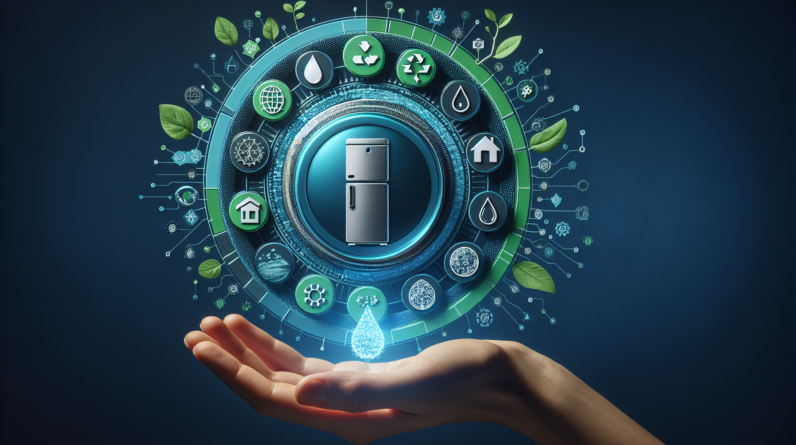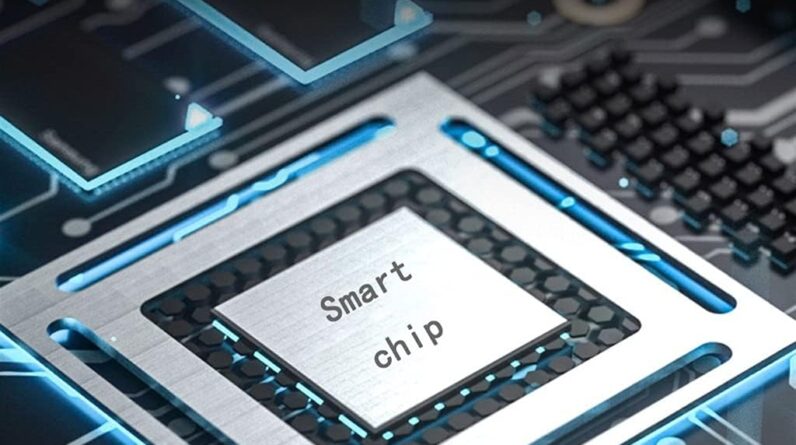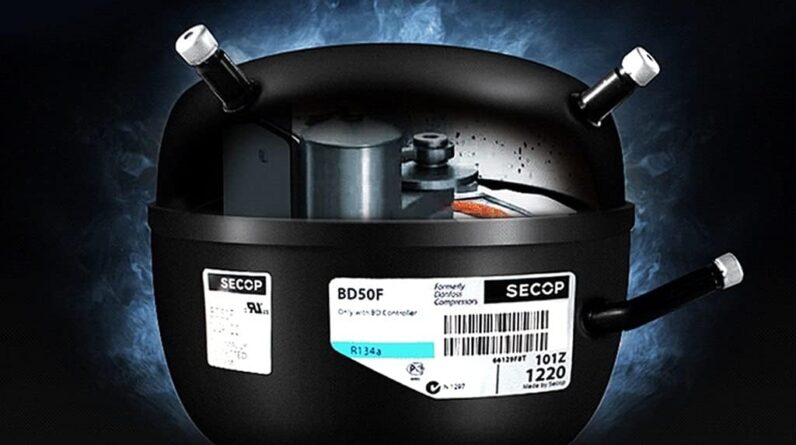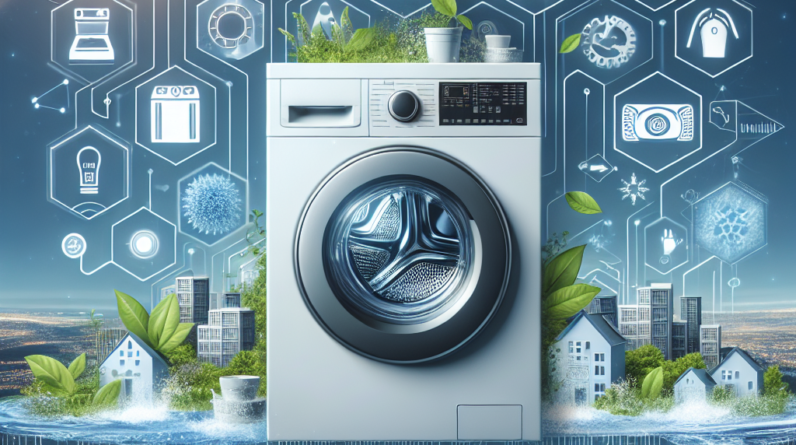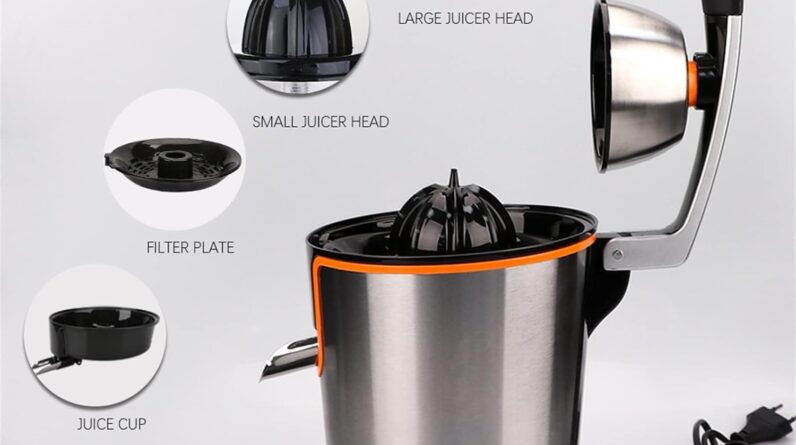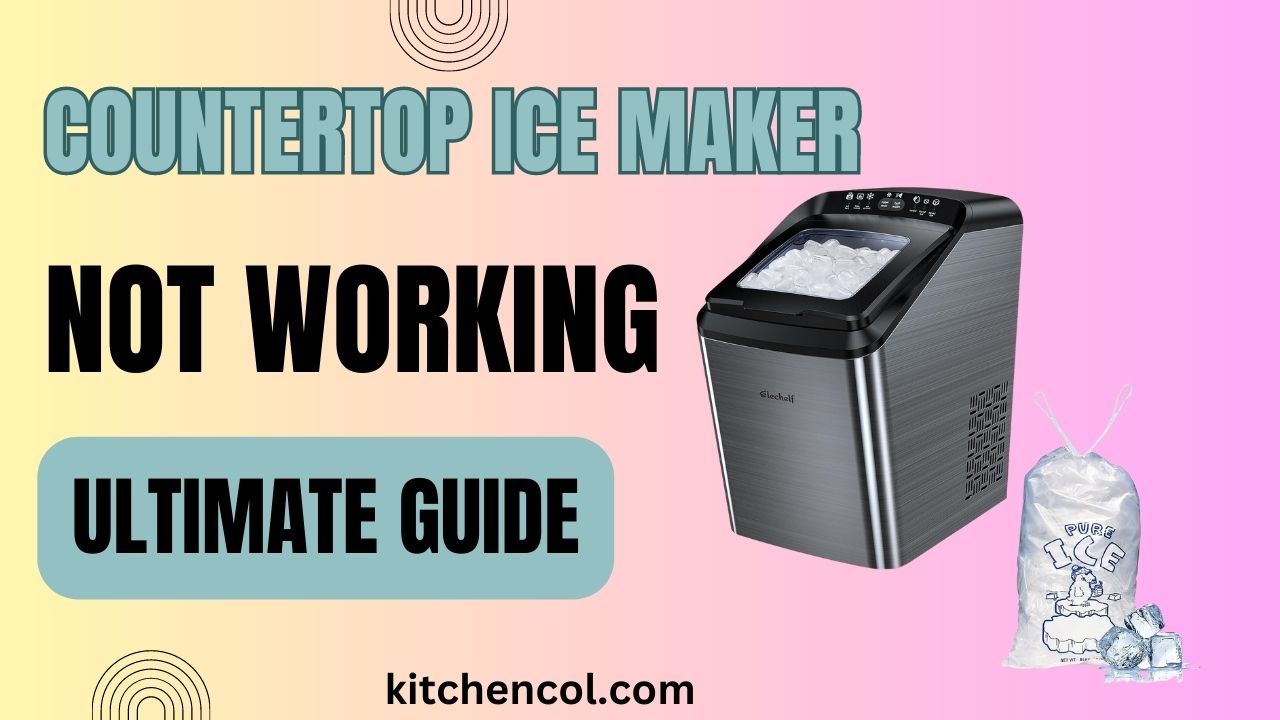
If you’re tired of constantly buying bags of ice or dealing with a faulty freezer ice maker, a countertop ice maker can be a convenient and cost-effective solution. However, like any appliance, countertop ice makers can sometimes encounter issues. In this article, you will discover a range of useful tips and tricks to troubleshoot common problems with your countertop ice maker, so you can enjoy refreshing ice whenever you need it. From addressing ice production issues to tackling noisy machines, we’ve got you covered. Say goodbye to warm drinks and hello to effortlessly chilled beverages with these troubleshooting techniques.
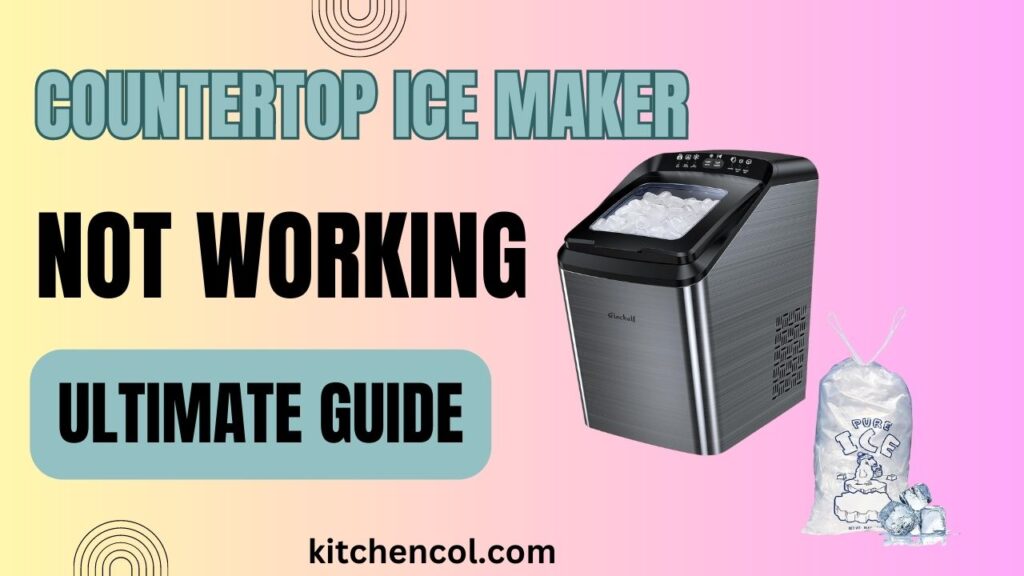
This image is property of kitchencol.com.
1. Ice Maker is not producing ice
If your ice maker is not producing ice, there could be several reasons for this issue. Here are some possible causes and troubleshooting steps to help you resolve the problem:
1.1 Ice maker is not plugged in
The first thing to check is whether your ice maker is properly plugged into a power outlet. Make sure the power cord is securely connected to both the ice maker and the outlet. If the ice maker is not receiving power, it will not be able to produce ice.
1.2 Water supply is not connected or turned on
Another common issue is a disconnected or turned-off water supply. Check the water line connection at the back of the ice maker to ensure it is properly attached. Also, make sure the water supply valve is fully open. If the water supply is not connected or turned on, the ice maker will not have access to water to make ice.
1.3 Water filter is clogged
If your ice maker has a water filter, it’s important to regularly check and replace it as necessary. A clogged water filter can restrict water flow and prevent the ice maker from producing ice. Refer to the user manual or manufacturer’s instructions on how to replace the water filter.
1.4 Ice maker is not set to the right temperature
Check the temperature setting on your ice maker. If the temperature is too warm, the ice maker may not be able to freeze the water properly to form ice cubes. Adjust the temperature setting according to the manufacturer’s instructions to ensure it is at the recommended level.
1.5 Ice maker has a faulty water inlet valve
The water inlet valve supplies water to the ice maker. If the valve is faulty, it may not allow water to flow into the ice maker, resulting in no ice production. Contact a professional technician to inspect and replace the water inlet valve if necessary.
1.6 Ice maker has a faulty water level sensor
The water level sensor detects when the ice tray is full and stops the ice-making process. A faulty water level sensor may incorrectly sense that the tray is full, preventing the ice maker from producing more ice. Consult a professional technician to diagnose and replace the water level sensor if needed.
1.7 Ice maker has a faulty thermostat
The thermostat regulates the temperature inside the ice maker. If the thermostat is faulty, it can disrupt the ice-making process. A professional technician can test the thermostat and replace it if necessary to ensure proper ice production.
1.8 Ice cubes are not being released from the tray
If the ice cubes are not being released from the tray, the problem may lie with the ice maker’s mechanism for dispensing ice. It could be due to a faulty motor or a jammed mechanism. In this case, you may need to contact a professional technician to inspect and repair the ice maker.
1.9 Ice maker has a faulty motor
The motor in the ice maker is responsible for operating various components, such as the water inlet valve and the ice cube release mechanism. If the motor is faulty, it can prevent the ice maker from producing ice. A professional technician can examine the motor and replace it if necessary.
1.10 Ice maker has a faulty control board
The control board controls the functions of the ice maker. If the control board is malfunctioning, it can disrupt the ice-making process. Contact a professional technician to assess the control board and repair or replace it if needed.
2. Ice cubes are small or misshapen
If your ice cubes are coming out small or misshapen, it indicates a problem with the ice maker’s functionality. Here are some possible causes and troubleshooting steps to address the issue:
2.1 Water pressure is too low
Insufficient water pressure can result in smaller or misshapen ice cubes. Check the water supply line to ensure there are no kinks or restrictions. If the water pressure is too low, it may be necessary to contact a professional plumber to assess and improve the water flow.
2.2 Water filter is clogged
A clogged water filter can also affect the size and shape of the ice cubes. Regularly replacing the water filter can help maintain proper water flow and ensure the production of well-formed ice cubes.
2.3 Temperature in freezing compartment is too warm
If the temperature in the freezing compartment is too warm, the ice cubes may not freeze properly and can become small or misshapen. Check the temperature setting and make sure it is set at the recommended level. Adjust if necessary and monitor the ice production.
2.4 Ice maker has a faulty water inlet valve
A faulty water inlet valve can disrupt the water flow into the ice maker, resulting in small or misshapen ice cubes. Have a professional technician examine and replace the water inlet valve if needed.
2.5 Ice maker has a faulty water level sensor
A malfunctioning water level sensor can cause improper water levels in the ice maker, leading to subpar ice cube formation. Contact a professional technician to inspect and replace the water level sensor if necessary.
2.6 Ice maker has a faulty thermostat
A faulty thermostat can affect the freezing process and result in small or misshapen ice cubes. A professional technician can test the thermostat and replace it if required to ensure proper ice cube formation.
2.7 Ice maker has a faulty condenser fan
The condenser fan helps cool the ice maker and maintain appropriate temperatures. If the condenser fan is faulty, it can disrupt the ice-making process and produce inadequate ice cubes. Consult a professional technician to assess and repair the condenser fan.
2.8 Ice maker has a faulty evaporator fan
The evaporator fan distributes cold air throughout the freezing compartment, enabling proper ice formation. If the evaporator fan is malfunctioning, it can impact the ice cube quality. Have a professional technician examine and replace the evaporator fan if necessary.
2.9 Ice maker has a faulty control board
A malfunctioning control board can lead to various issues in the ice maker, including inadequate ice cube production. Contact a professional technician to inspect the control board and repair or replace it as needed.
2.10 Ice maker has a faulty ice mold heater
The ice mold heater prevents ice cubes from sticking to the mold during the freezing process. If the ice mold heater is faulty, it can result in improperly formed ice cubes. Consult a professional technician to assess and replace the ice mold heater if necessary.
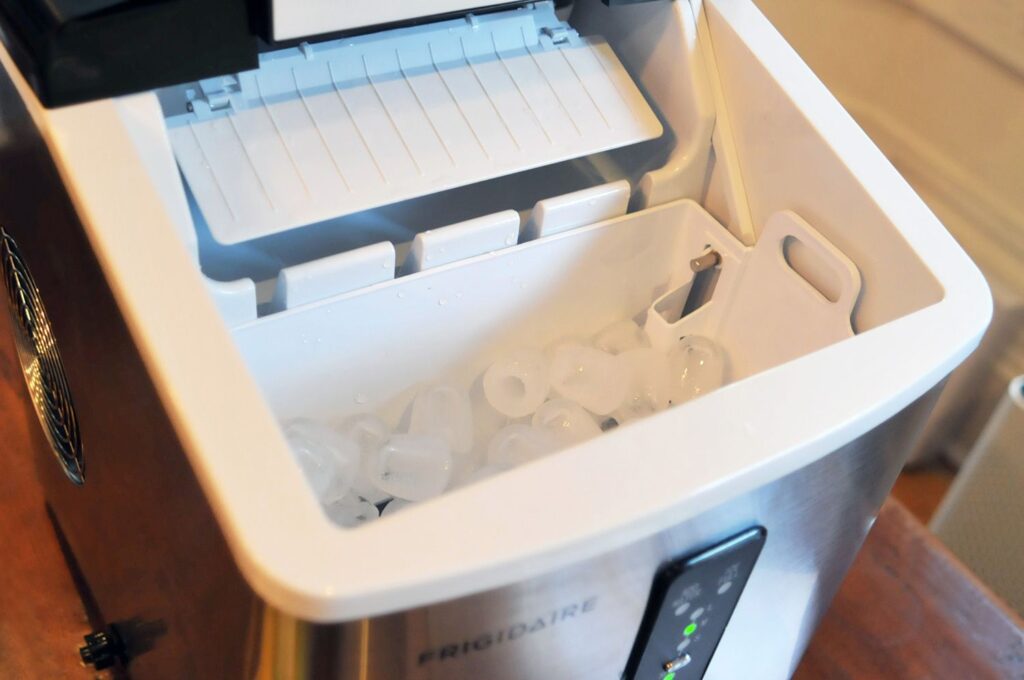
This image is property of icemakerbasics.com.
3. Ice maker is leaking water
A leaking ice maker can be a frustrating issue. Here are some possible reasons and troubleshooting steps to help you address water leakage from your ice maker:
3.1 Water inlet valve is leaking
If the water inlet valve is leaking, it can cause water to drip or flow out of the ice maker. It’s best to consult a professional technician to inspect and replace the faulty water inlet valve to resolve the issue.
3.2 Water supply line is leaking
Check the water supply line for any signs of leakage. Tighten any loose connections or replace the water supply line if it is damaged or worn out. If the leakage persists, it is advisable to contact a professional plumber to assess and repair the issue.
3.3 Ice maker has a faulty water level sensor
A malfunctioning water level sensor can lead to improper water fill levels, causing water to overflow and leak from the ice maker. Have a professional technician examine the water level sensor and replace it if necessary to prevent further leakage.
3.4 Drain line is clogged or frozen
A clogged or frozen drain line can result in water backing up and leaking from the ice maker. Clear any obstructions or ice buildup in the drain line to allow proper drainage and prevent leakage.
3.5 Ice maker has a faulty ice mold heater
If the ice mold heater is faulty, it can cause excess ice to melt, leading to water leakage. Consult a professional technician to assess and replace the faulty ice mold heater if needed.
3.6 Ice maker has a faulty evaporator fan
A malfunctioning evaporator fan can cause excessive frost or ice buildup, leading to water leakage. Have a professional technician inspect and repair the evaporator fan to resolve the issue.
3.7 Ice maker has a faulty control board
A faulty control board can disrupt the ice maker’s functions, including the regulation of water flow. Contact a professional technician to assess the control board and repair or replace it if necessary to rectify the water leakage problem.
3.8 Ice maker has a faulty defrost thermostat
A faulty defrost thermostat can result in excessive frost buildup in the ice maker, leading to water leakage. Consult a professional technician to examine and replace the faulty defrost thermostat to prevent further leakage.
3.9 Ice maker has a faulty defrost heater
If the defrost heater is defective, it can cause excess frost or ice to accumulate, resulting in water leakage. Have a professional technician inspect and replace the faulty defrost heater if necessary to resolve the issue.
3.10 Ice maker has a faulty condenser fan
The condenser fan helps cool the ice maker, and if it is faulty, it can cause ice to melt and result in water leakage. Contact a professional technician to assess and repair the condenser fan to eliminate the leakage problem.
4. Ice maker is making loud or unusual noises
If your ice maker is producing loud or unusual noises, it may indicate an underlying problem. Here are some potential causes and troubleshooting steps to address the noise issue:
4.1 Ice maker is not level
Ensure that your ice maker is level and properly aligned. If it is not level, it can result in vibrations and noise during operation. Adjust the ice maker’s position or use a leveling tool to make sure it is straight and stable.
4.2 Ice maker has a build-up of mineral deposits
Over time, mineral deposits can accumulate in the ice maker’s components, such as the water inlet valve or the ice mold. These deposits can cause the ice maker to make loud or strange noises. Regularly cleaning and descaling the ice maker can help remove mineral buildup and reduce noise.
4.3 Ice maker has a faulty motor
A faulty motor can cause unusual noises during operation. Contact a professional technician to inspect and replace the faulty motor if necessary to resolve the noise issue.
4.4 Ice maker has a faulty evaporator fan
The evaporator fan distributes cold air throughout the ice maker. If the fan is faulty or obstructed, it can produce loud or unusual noises. Have a professional technician examine and repair the evaporator fan to eliminate the noise problem.
4.5 Ice maker has a faulty condenser fan
The condenser fan helps cool the ice maker and can produce noise if it is malfunctioning. Consult a professional technician to assess and repair the condenser fan to resolve the noise issue.
4.6 Ice maker has a faulty water inlet valve
A faulty water inlet valve can cause loud or unusual noises when water flows into the ice maker. It is best to have a professional technician inspect and replace the faulty water inlet valve if needed.
4.7 Ice maker has a faulty control board
A malfunctioning control board can disrupt the ice maker’s functions and result in unusual noises. Contact a professional technician to assess the control board and repair or replace it as necessary to resolve the noise problem.
4.8 Ice maker has a faulty ice mold heater
The ice mold heater helps release ice cubes from the mold. If the heater is faulty, it can produce noise during the ice release process. Have a professional technician examine and replace the faulty ice mold heater to eliminate the noise issue.
4.9 Ice maker has a faulty thermostat
A faulty thermostat can cause the ice maker to operate incorrectly and produce loud or unusual noises. A professional technician can test the thermostat and replace it if necessary to resolve the noise problem.
4.10 Ice maker has a faulty compressor
The compressor is responsible for cooling the ice maker and can produce noise if it is faulty. Contact a professional technician to assess and repair the compressor to eliminate the noise issue.
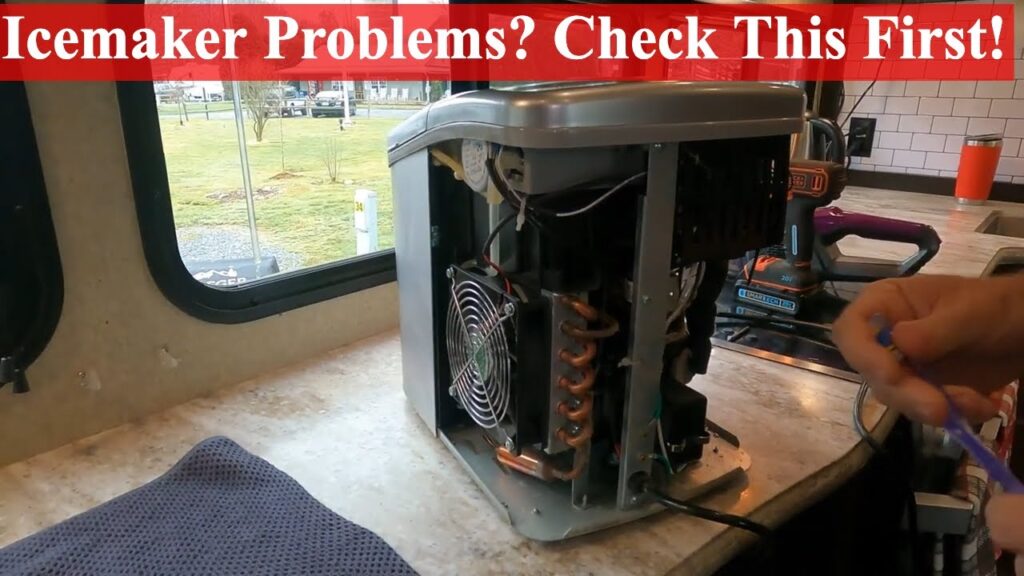
This image is property of i.ytimg.com.
5. Ice has a bad taste or odor
If your ice has a bad taste or odor, it can be off-putting. Here are several potential causes and troubleshooting steps to improve the taste and odor of your ice:
5.1 Water supply has impurities
The quality of the water supply can impact the taste and odor of your ice. If the water contains impurities or contaminants, it can transfer them to the ice. Consider using filtered or purified water to prevent unwanted taste and odor in your ice.
5.2 Water filter needs to be replaced
If your ice maker has a water filter, it is crucial to replace it regularly. Over time, the filter can become clogged with impurities, affecting the taste and odor of the ice. Refer to the user manual or manufacturer’s instructions to determine the recommended filter replacement schedule.
5.3 Ice maker has a build-up of mineral deposits
Mineral deposits can accumulate inside the ice maker, affecting the taste and odor of the ice. Regularly cleaning and descaling the ice maker can help remove mineral buildup and improve the quality of the ice.
5.4 Ice maker has a faulty water inlet valve
A faulty water inlet valve can cause water to be dispensed irregularly or at improper temperatures, resulting in poor-tasting or odorous ice. Contact a professional technician to inspect and replace the faulty water inlet valve if necessary.
5.5 Ice maker has a faulty water reservoir
The water reservoir stores the water before it is frozen into ice. If the reservoir is contaminated, it can affect the taste and odor of the ice. Consult a professional technician to assess and replace the faulty water reservoir if needed.
5.6 Ice maker has a faulty water line
A faulty water line can introduce impurities or contaminants into the water supply, impacting the taste and odor of the ice. Have a professional technician examine and replace the faulty water line if necessary to improve ice quality.
5.7 Ice maker has a faulty water filter housing
If the water filter housing is damaged or faulty, it can affect the efficiency of the water filter and lead to poor-tasting or odorous ice. Contact a professional technician to inspect and replace the faulty water filter housing if required.
5.8 Ice maker has a faulty ice mold
A faulty or damaged ice mold can affect the quality of the ice cubes, leading to an unpleasant taste or odor. Consult a professional technician to assess and replace the faulty ice mold if necessary.
5.9 Ice maker has a faulty water level sensor
A malfunctioning water level sensor can result in improper water levels in the ice maker, causing subpar ice quality. Have a professional technician examine and replace the water level sensor if necessary to improve the taste and odor of the ice.
5.10 Ice maker has a faulty control board
A faulty control board can disrupt the ice maker’s functions, including the regulation of water flow and ice formation. Contact a professional technician to assess the control board and repair or replace it if necessary to enhance ice quality.
6. Ice maker is not dispensing ice
If your ice maker is not dispensing ice when prompted, here are some possible causes and troubleshooting steps to help you resolve the issue:
6.1 Dispenser motor is malfunctioning
The dispenser motor is responsible for ejecting ice from the ice maker. If the motor is malfunctioning, it can prevent the ice maker from dispensing ice. Have a professional technician inspect and replace the faulty dispenser motor if needed.
6.2 Ice dispenser solenoid is faulty
The ice dispenser solenoid controls the release of ice from the ice maker. If the solenoid is faulty, it may not open properly, leading to a lack of ice dispensing. Consult a professional technician to assess and replace the faulty ice dispenser solenoid if necessary.
6.3 Ice dispenser switch is faulty
A faulty ice dispenser switch can disrupt the communication between the dispenser and the ice maker, resulting in no ice dispensing. Have a professional technician examine and replace the faulty ice dispenser switch if needed.
6.4 Ice dispenser auger motor is faulty
The ice dispenser auger motor rotates the dispenser auger to release ice. If the motor is faulty, the auger may not rotate correctly or fail to dispense ice. Consult a professional technician to inspect and replace the faulty ice dispenser auger motor if necessary.
6.5 Ice dispenser door is not closing properly
If the ice dispenser door is not closing properly, it can prevent the ice maker from dispensing ice. Ensure that the door is not obstructed and closes securely to allow for proper ice dispensing.
6.6 Ice dispenser actuator is faulty
The ice dispenser actuator activates the ice dispenser mechanisms. If the actuator is faulty, it may not engage properly, resulting in no ice dispensing. Have a professional technician examine and replace the faulty ice dispenser actuator if needed.
6.7 Ice bucket auger is faulty
The ice bucket auger helps move ice from the ice maker to the dispenser. If the auger is faulty or damaged, it can prevent the ice maker from dispensing ice. Consult a professional technician to assess and replace the faulty ice bucket auger if necessary.
6.8 Ice chute is blocked
A blocked ice chute can prevent ice from being dispensed properly. Check for any obstructions, such as ice buildup or debris, and clear the ice chute as needed to enable proper ice dispensing.
6.9 Ice maker has a faulty control board
A faulty control board can disrupt the ice maker’s functions, including the ice dispensing mechanism. Contact a professional technician to assess the control board and repair or replace it as necessary to resolve the issue.
6.10 Ice maker has a faulty dispenser module
The dispenser module controls the functions of the ice dispenser. If the module is faulty, it can prevent proper ice dispensing. Have a professional technician examine and replace the faulty dispenser module if needed.
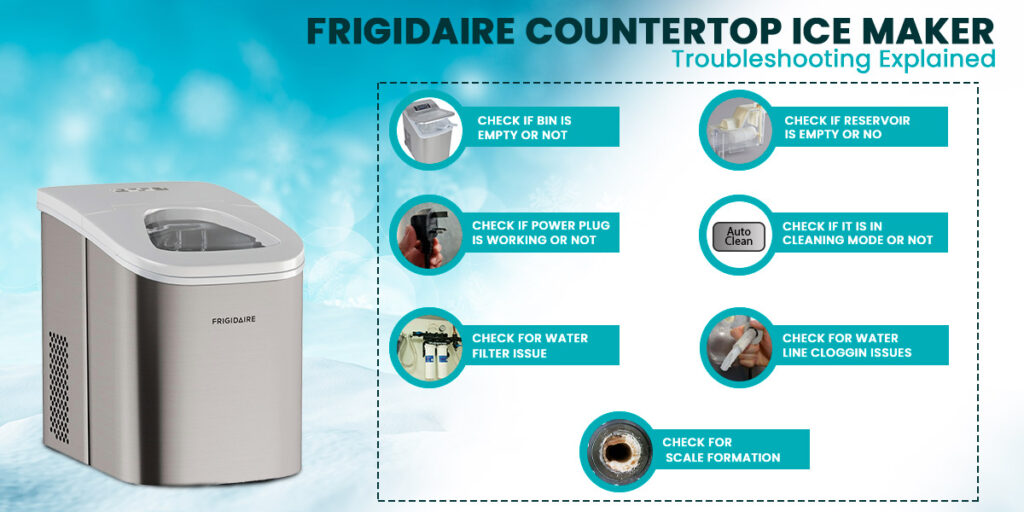
This image is property of pesosice.com.
7. Ice maker is not making enough ice
If your ice maker is not producing enough ice, consider the following potential causes and troubleshooting steps to increase ice production:
7.1 Ice maker is set to the wrong ice production setting
Check the ice maker’s settings to ensure it is set to the correct ice production setting. If the setting is too low, it may limit ice production. Adjust the ice production setting according to the manufacturer’s instructions to increase ice production.
7.2 Water pressure is too low
Insufficient water pressure can impede ice production. Ensure that the water supply line is fully open and that the water pressure meets the ice maker’s requirements. If the water pressure is too low, consult a professional plumber to assess and improve the water flow.
7.3 Freezer temperature is too warm
The freezer temperature should be set at the recommended level for optimal ice production. If the temperature is too warm, it can inhibit ice formation. Adjust the freezer temperature to the correct level and monitor the ice production.
7.4 Ice maker has a clogged water line
A clogged water line can restrict water flow to the ice maker and reduce ice production. Clear any obstructions or ice buildup in the water line to ensure proper water flow and increase ice production.
7.5 Ice maker has a faulty water inlet valve
A faulty water inlet valve can disrupt water flow to the ice maker, resulting in insufficient ice production. Have a professional technician inspect and replace the faulty water inlet valve if required to improve ice production.
7.6 Ice maker has a faulty water filter housing
A faulty water filter housing can impair the effectiveness of the water filter, affecting ice production. Contact a professional technician to examine and repair the faulty water filter housing to enhance ice production.
7.7 Ice maker has a faulty condenser fan
The condenser fan helps cool the ice maker, and if it is faulty, it can hinder ice production. Consult a professional technician to assess and repair the condenser fan to increase ice production.
7.8 Ice maker has a faulty evaporator fan
The evaporator fan distributes cold air throughout the ice maker, facilitating ice formation. If the fan is malfunctioning, it can inhibit ice production. Have a professional technician examine and replace the faulty evaporator fan if necessary to increase ice production.
7.9 Ice maker has a faulty control board
A faulty control board can disrupt the ice maker’s functions, including ice production. Contact a professional technician to assess the control board and repair or replace it if necessary to improve ice production.
7.10 Ice maker has a faulty ice mold heater
The ice mold heater prevents ice cubes from sticking to the mold, enabling proper ice production. If the heater is faulty, it can hinder ice formation. Consult a professional technician to assess and replace the faulty ice mold heater if needed.
8. Ice maker is freezing up
If your ice maker is freezing up, it can impact the production and quality of ice. Here are some potential causes and troubleshooting steps to address the issue:
8.1 Freezer temperature is too cold
Excessively cold temperatures in the freezer can cause the ice maker to freeze up. Check the freezer’s temperature setting and adjust it to the recommended level. Monitor the ice maker to ensure it is functioning properly without excessive freezing.
8.2 Ice maker has a faulty water inlet valve
A faulty water inlet valve may not regulate water flow properly, resulting in ice formation issues and freezing up. Have a professional technician inspect and replace the faulty water inlet valve if necessary to resolve the freezing problem.
8.3 Ice maker has a faulty water level sensor
A malfunctioning water level sensor can lead to incorrect water levels in the ice maker, causing freezing problems. Contact a professional technician to examine and replace the water level sensor if needed to prevent further freezing.
8.4 Ice maker has a faulty defrost thermostat
The defrost thermostat controls the freezer’s defrosting cycles, and if it is faulty, it can lead to excessive frost or ice buildup, resulting in freezing issues. Consult a professional technician to assess and replace the faulty defrost thermostat to prevent freezing.
8.5 Ice maker has a faulty defrost heater
A defective defrost heater can cause excessive frost or ice accumulation, leading to freezing problems. Have a professional technician inspect and replace the faulty defrost heater if necessary to resolve the freezing issue.
8.6 Ice maker has a faulty evaporator fan
The evaporator fan circulates cold air throughout the ice maker, and if it is malfunctioning, it can lead to freezing problems. Consult a professional technician to examine and repair the evaporator fan to address the freezing-up issue.
8.7 Ice maker has a faulty control board
A faulty control board can disrupt the ice maker’s functions and result in freezing problems. Contact a professional technician to assess the control board and repair or replace it as necessary to resolve the freezing-up issue.
8.8 Ice maker has a faulty thermistor
The thermistor monitors the temperature in the ice maker and can affect ice formation and freezing. Have a professional technician test and replace the faulty thermistor if needed to address the freezing problem.
8.9 Ice maker has a faulty air damper control
The air damper control regulates the airflow within the ice maker, and if it is malfunctioning, it can contribute to freezing issues. Consult a professional technician to examine and repair the faulty air damper control to address the freezing-up problem.
8.10 Ice maker has a faulty dispenser motor
If the dispenser motor is faulty, it can cause freezing problems within the ice maker. Contact a professional technician to inspect and replace the faulty dispenser motor to resolve the freezing issue.
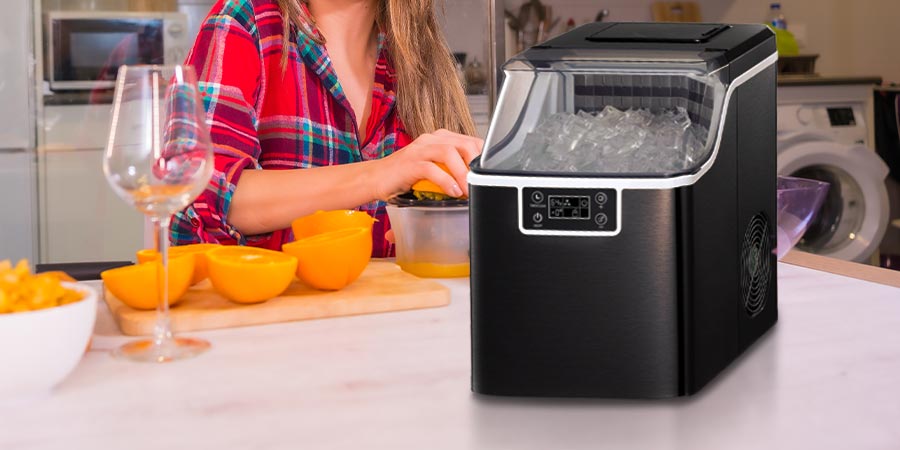
This image is property of cdn.shopify.com.
9. Ice maker is not turning on
If your ice maker is not turning on at all, it can be frustrating. Here are some possible causes and troubleshooting steps to help you resolve the issue:
9.1 Ice maker is not plugged in
Check that your ice maker is securely plugged into a power outlet. Ensure that the power cord is properly connected to both the ice maker and the outlet. If the ice maker is not receiving power, it will not turn on.
9.2 Power outlet is not working
Test the power outlet by plugging in another device to verify if it is functioning correctly. If the outlet is not providing power, try using a different outlet or consult an electrician to resolve the power supply issue.
9.3 Power supply cord is faulty
Examine the power supply cord for any visible damage or wear. If the cord is damaged, it may need to be replaced. Consult a professional technician to inspect and replace the faulty power supply cord if necessary.
9.4 Ice maker has a faulty control board
A malfunctioning control board can prevent the ice maker from turning on. Contact a professional technician to assess the control board and repair or replace it if necessary to resolve the issue.
9.5 Ice maker has a faulty on/off switch
If the on/off switch is faulty, it can disrupt the power supply to the ice maker and prevent it from turning on. Have a professional technician examine and replace the faulty on/off switch if needed.
9.6 Ice maker has a faulty motor
A faulty motor can prevent the ice maker from turning on and operating correctly. Contact a professional technician to inspect and replace the faulty motor if necessary to resolve the issue.
9.7 Ice maker has a faulty thermostat
The thermostat controls the temperature inside the ice maker and can affect its operation. If the thermostat is faulty, it may prevent the ice maker from turning on. Have a professional technician test and replace the faulty thermostat if needed.
9.8 Ice maker has a faulty wiring harness
A faulty wiring harness can disrupt the electrical connections within the ice maker, preventing it from turning on. Consult a professional technician to inspect and replace the faulty wiring harness to address the issue.
9.9 Ice maker has a faulty water level sensor
A malfunctioning water level sensor can affect the ice maker’s operation and prevent it from turning on. Have a professional technician examine and replace the water level sensor if necessary to resolve the issue.
9.10 Ice maker has a faulty temperature sensor
The temperature sensor monitors the temperature inside the ice maker and can impact its operation. If the temperature sensor is faulty, it may prevent the ice maker from turning on. Consult a professional technician to assess and replace the faulty temperature sensor if needed.
10. Other troubleshooting tips and tricks
In addition to the specific troubleshooting steps mentioned above, here are some general tips and tricks to help you address common countertop ice maker problems:
10.1 Clean the ice maker regularly
Regularly clean the ice maker according to the manufacturer’s instructions. This includes removing any ice buildup, descaling the components, and wiping the interior surfaces. Keeping the ice maker clean can prevent issues and improve its performance.
10.2 Check for loose or disconnected wires
Inspect the ice maker for any loose or disconnected wires. Ensure that all connections are secure and properly connected. Loose or disconnected wires can cause malfunctioning or inconsistent ice maker operation.
10.3 Ensure proper ventilation around the ice maker
Make sure that the ice maker has sufficient space around it for proper ventilation. Blocked or restricted air circulation can hinder cooling and affect ice production. Allow for adequate airflow around the ice maker to maintain optimal performance.
10.4 Reset the ice maker
Some ice makers have a reset button or feature that can help resolve minor issues. Refer to the user manual or manufacturer’s instructions on how to reset your specific ice maker model.
10.5 Consult the user manual or manufacturer’s website for specific troubleshooting steps
Refer to the user manual or visit the manufacturer’s website for detailed troubleshooting instructions specific to your ice maker model. These resources can provide valuable information and guidance to help you troubleshoot and resolve issues.
10.6 Consider contacting a professional technician for assistance
If you are unable to identify or resolve the issue on your own, it is advisable to contact a professional technician. They have the expertise and tools to diagnose and repair complex ice maker problems effectively.
10.7 Perform a thorough inspection of the ice maker
Conduct a thorough visual inspection of the ice maker, checking for any visible damage, leaks, or blockages. Identifying and addressing these issues promptly can prevent further problems and extend the lifespan of your ice maker.
10.8 Check for any visible damage or blockages
Inspect the ice maker for any visible damage or blockages that may be hindering its operation. This includes checking the ice mold, water lines, valves, and other components. Address any visible damage or blockages accordingly.
10.9 Be cautious when attempting DIY repairs
If you choose to attempt repairs yourself, exercise caution and prioritize safety. Follow proper electrical safety procedures, such as unplugging the ice maker before working on it. Remember that some repairs may require professional expertise to avoid further damage or personal injury.
10.10 Follow safety precautions and guidelines
Always adhere to safety precautions and guidelines recommended by the manufacturer when handling and troubleshooting your ice maker. This includes using the appropriate tools, wearing protective gear, and following proper procedures to ensure safety during the troubleshooting process.
By following these troubleshooting tips and tricks, you can effectively address common problems with your countertop ice maker and ensure its optimal performance. Remember to consult the user manual or seek professional assistance if needed, and always prioritize your safety when dealing with appliances.
